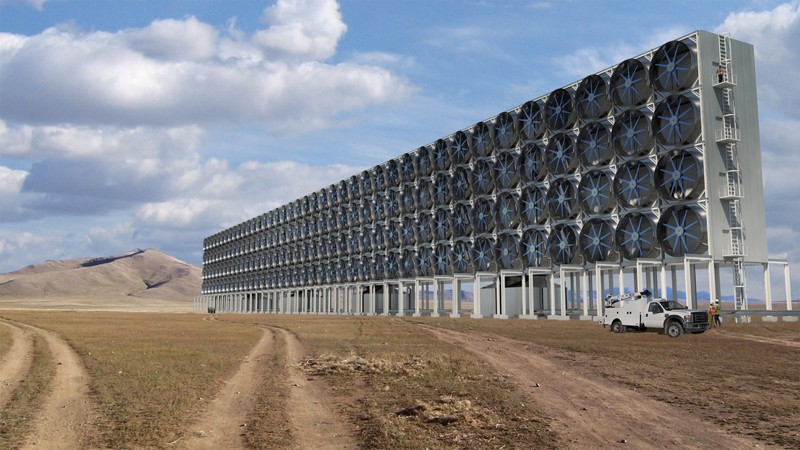Direct air capture is a method which involves sucking ambient air into large ventilators, then treating that air and finally releasing it back into the ambience. It is known for the use of CO2 removal, but it could also be used for methane removal.
The main problem with DAC is it’s energy use. Both the production of the ventilators as well as their operation require large amounts of electricity.
DAC is already in practical use, compare https://climeworks.com beyond others.
Quote Wikipedia (Link 1)
Direct air capture (DAC) is a process of capturing carbon dioxide (CO2) directly from the ambient air (as opposed to capturing from point sources, such as a cement factory or biomass power plant) and generating a concentrated stream of CO2 for sequestration or utilization or production of carbon-neutral fuel and windgas. Carbon dioxide removal is achieved when ambient air makes contact with chemical media, typically an aqueous alkaline solvent[1] or sorbents.[2] These chemical media are subsequently stripped of CO2 through the application of energy (namely heat), resulting in a CO2 stream that can undergo dehydration and compression, while simultaneously regenerating the chemical media for reuse.
DAC was suggested in 1999 and is still in development,[3][4] though several commercial plants are in operation or planning across Europe and the US. Large-scale DAC deployment may be accelerated when connected with economical use cases, or policy incentives.
DAC is not an alternative to traditional, point-source carbon capture and storage (CCS), but can be used to manage emissions from distributed sources, like exhaust fumes from cars. When combined with long-term storage of CO2, DAC can act as a carbon dioxide removal tool, although as of 2021 it is not profitable because the cost per tonne of carbon dioxide is several times the carbon price.
Endquote
Picture description: Quote from Nature.com (Link 2)
This artist’s rendering shows Carbon Engineering’s design for an ‘air contactor’ to pull carbon dioxide from the atmosphere.Credit: Carbon Engineering
Endquote
